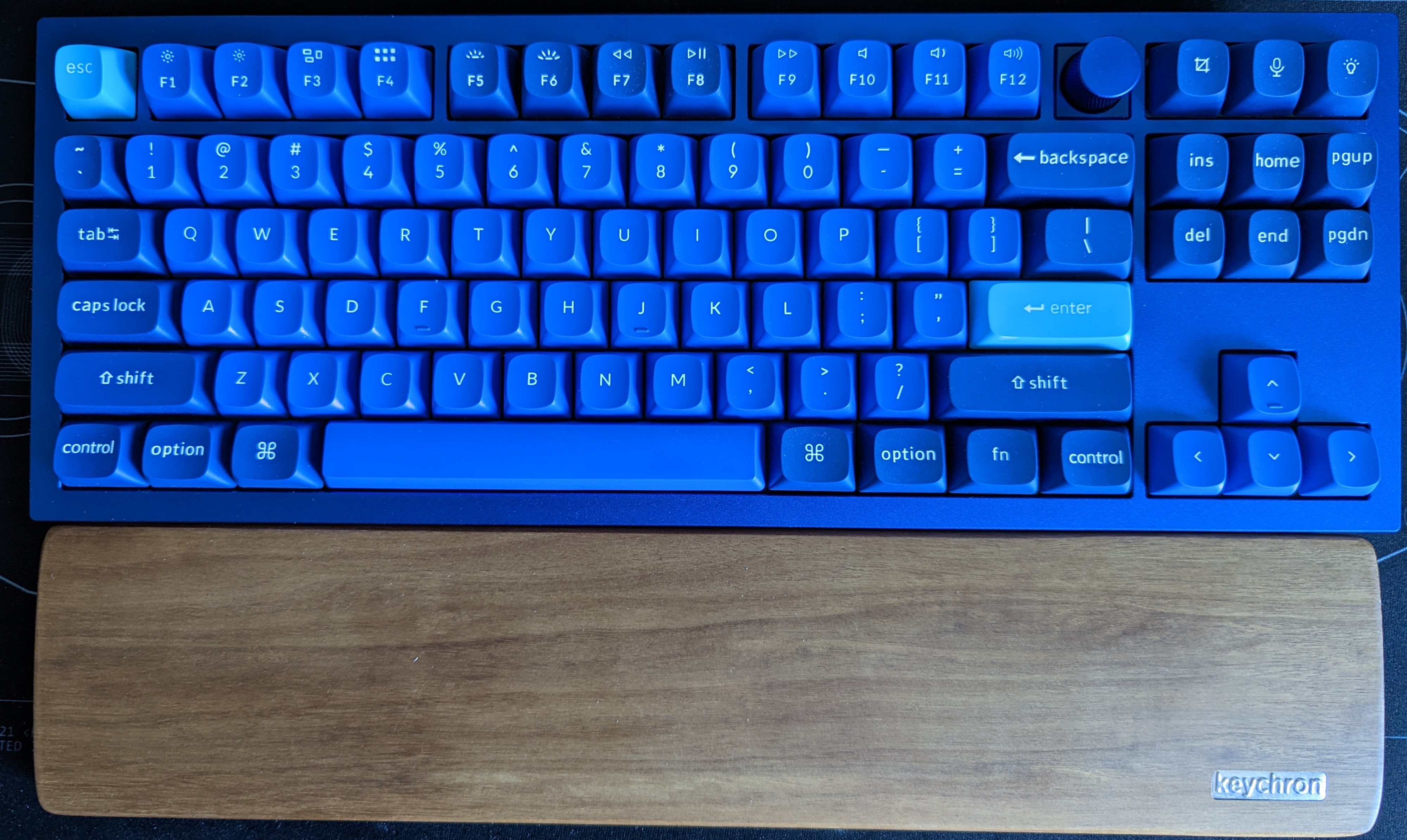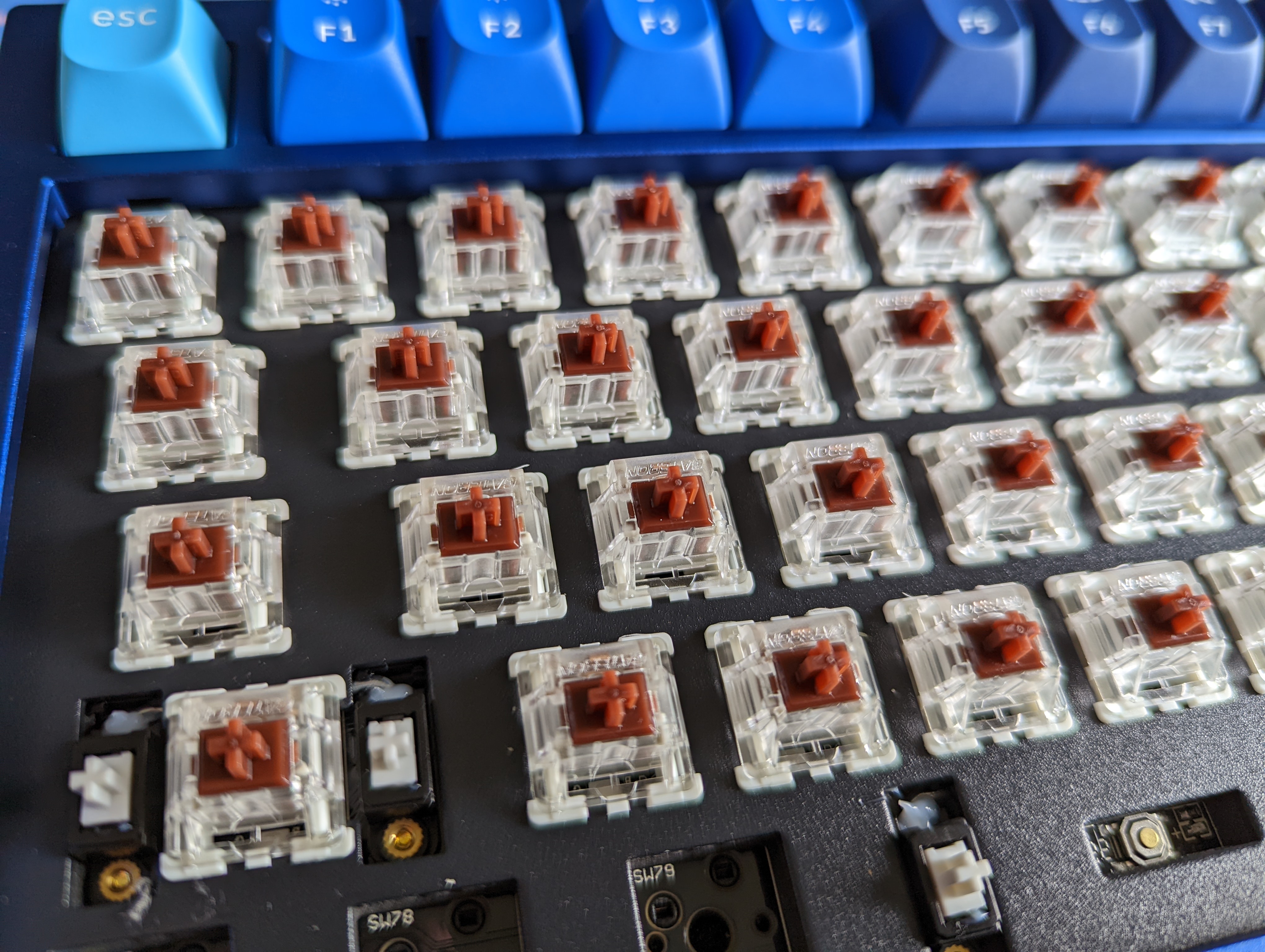
In its early pre-pandemic days, Keychron made a reputation for itself with its sequence of inexpensive mechanical keyboards — together with just a few low-profile ones that stay a rarity to this present day. These boards didn’t essentially attraction to fanatics, but had been greater than ok for many mainstream customers who needed a unique form of keyboard. Final 12 months, Keychron upped the ante with the launch of the Q1, an enthusiast-level, totally customizable hotswap keyboard with a 75% structure that had quite a lot of similarities to the closely hyped GMMK Professional. Since then, Keychron has expanded this sequence with the 65% Q2, which obtained fairly rave opinions at the time and now the Q3.
The QMK-compatible Q3 clearly follows in the footsteps of the Q1 and Q2. It makes use of the similar double-gasket design that ought to make for a comparatively bouncy typing expertise (although in my expertise, there’s much less bounce than I might’ve anticipated), and the general design is just about the similar, with the exception that it’s a tenkeyless (TKL), so that you get a full keyboard with standalone arrow keys and a full row of perform keys, but with out the numpad. The physique is comprised of aluminum and the entire unit weighs in at a hefty 4.5 kilos. Partially, that’s as a result of Keychron opted for a metal plate right here.

Picture Credit: TechCrunch
You may choose to get a bare-bones model the place you provide your individual switches and keycaps for $154 (or $164 if you wish to get the elective quantity knob), or a completely assembled model with keycaps and your alternative of Gateron Professional Crimson, Blue or Brown switches for $174 (or $184 with knob).
For the additional $20, I believe getting the assembled model is a no brainer, provided that the keycaps and switches will price you considerably extra and even if you wish to change them, you might at all times reuse them in one other undertaking (as a result of who solely has one keyboard, proper?). The double-shot PBT keycaps aren’t the best (and the OSA profile takes a little bit of getting used to), but they’re completely serviceable and whereas some reviewers have reported points with legends that weren’t printed very properly, that was not a problem on the unit I obtained. Twisting the knob feels fairly satisfying, too.
Keychron provides three coloration decisions for the Q3: black, silver gray and navy blue, which all include matching keycaps in case you go for the totally assembled model. I acquired the blue model and actually loved the look.
My evaluation unit got here with Gateron Brown tactile switches, which I don’t love. They’re OK switches, but simply not my model. I had a contemporary set of Akko CS Jelly Black linear switches, that are just about my go-to choice for funds linears as of late (or Gateron Yellows, which Keychron sadly doesn’t supply as an choice for its Q sequence).

Picture Credit: TechCrunch
The enjoyment of customized mechanical keyboards is that you would be able to regulate them to your individual preferences. Nowadays, with hotswap being the commonplace, you may simply strive completely different switches as a substitute of simply choosing the mediocre horror that’s the Cherry Brown. But at the similar time, the Keychrone Q2 gained over plenty of customers as a result of it was just about nice out of the field. It was a straightforward board to suggest to first-timers. That wasn’t the case with the unique Q1 (Keychron has since launched a second model), and sadly it’s not true for the Q3 both.
In some ways, the Q3 is paying homage to the Q1 in that it may be nice, but you must put a bit of labor into it. Should you’re an fanatic in search of this type of design, the Q3 will likely be proper up your alley, but out of the field, it suffers from fairly a little bit of case ping (that’s, a quiet but positively audible high-pitched sound that resonates via the case once you hit a key and that may rapidly get annoying). It solely takes a couple of minutes to take the board aside, reduce up a Band-Assist and carry out the “power break mod” the place you strategically place these items of Band-Assist near the screws that maintain the board collectively, and also you’re in enterprise. When you have the board open, you may go for the tape mod and possibly add some extra sound dampening to the backside of the case and with possibly quarter-hour of labor, a Band-Assist, some masking tape and possibly a little bit of polyfill (there’s some sound dampening materials already included, but it’s not very efficient), you’re completed and the board will sound considerably higher. And let’s face it, in case you’re an fanatic, you had been going to do all of these issues anyway.
If all of that sounds prefer it’s manner an excessive amount of work for a keyboard, then the Q3 positively isn’t for you. You could possibly go for the Q2, which is a good gateway drug into mechanical keyboards in the similar worth bracket, and in order for you one thing fancier, your choices are countless.
Possibly it’s the bigger measurement or possibly the general design had already been dialed in earlier than the Q2 launched, but the Q3 looks like a slight step again for Keychron. Now, as I stated, in case you’re an fanatic and in search of a TKL, which isn’t a format that’s extensively obtainable, I believe the Q3 is an efficient choice. Should you’re not locked into the TKL structure, simply get a Q2 or possibly the NovelKeys NK87 (which begins at $135 for the polycarbonate case and $225 for the extra comparable aluminum one).